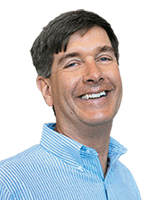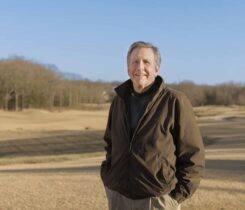The dollars (and temps) of greens covers

Clark Throssell
Mike Richardson, Ph.D., is a turfgrass scientist at the University of Arkansas. Mike and his colleagues have been studying the air temperature at which temporary covers should be used on ultradwarf bermudagrass greens. Mike can be reached at mricha@uark.edu for more information.
Q: What is the low air temperature threshold at which ultradwarf bermudagrass greens should be covered?
There is no answer that works well for every golf course. Traffic, shade, organic matter accumulation, management practices and root zone characteristics are different on every course. Therefore, superintendents should decide for themselves the air temperature at which they apply covers.
The traditional answer is that whenever the forecast low air temperature is 25 degrees F or lower, superintendents should apply covers. In our research, we examined covering TifEagle, MiniVerde and Champion ultradwarf bermudagrass (Cynodon dactylon x. C. transvaalensis) at forecast air temperatures of 25, 22, 18 and 15 degrees F for three years and found no differences in winter survival, regardless of covering temperature. We had cold winters in two of the three research years. In both of those years, 100 percent of ultradwarf bermudagrass that wasn’t covered died during the winter.
The temperature at which covers are applied often is determined by the expectations of the course’s management. For example, an elite golf course that receives little play in the winter and has extremely high expectations for turf performance in the golfing season should apply covers at 25 degrees F. A moderate golf course where revenue from winter play is important for economic survival should apply covers at 15 degrees F.
If a superintendent is interested in applying covers at a temperature lower than 25 degrees F, try covering at 22 degrees F and see what happens for a winter or two. If there is no damage with covering at 22 degrees F, try covering at 18 degrees F for a winter or two and adjust as needed based on turf survival.
Q: Describe the benefits of covering ultradwarf bermudagrass greens at a lower threshold air temperature?
The primary benefit is economic. A superintendent in North Carolina has determined that it costs $750 in labor to cover and uncover 20 greens on the golf course. In our research, we found there was a reduction of eight to 10 coverings per year by covering at an air temperature of 15 degrees F versus 25 degrees F. That translates to a savings of $5,000 or more per year.
There also is an increase in revenue because the greens aren’t covered for as many days during the winter golf season. That increase in revenue is harder to quantify because of differences among golf courses.
We observed no differences in winter survival by covering at 25, 22, 18 and 15 degrees F air temperature and no practical differences in spring green-up among covering temperatures. We saw no differences in summer turf performance among covering temperatures.
Q: What are the guidelines for removing covers?
There are no accepted guidelines for removing covers. It depends on the air temperature at which golfers want to play, and each golf course has a unique set of golfers. Superintendents should consider the long-range forecast in order to minimize the number of times they apply and remove covers.
Q: Is there anything else you would like to add?
Of the three cultivars tested, TifEagle and MiniVerde had the greatest winter survival, while Champion was injured the most.
We also tested applying a wetting agent in early December. The results were inconsistent. However, when we observed differences, they were always positive, which leads us to suggest an application of a wetting agent to ultradwarf bermudagrass greens in early December. Symptoms of localized dry spot can’t be seen at that time of year because the grass is dormant.












